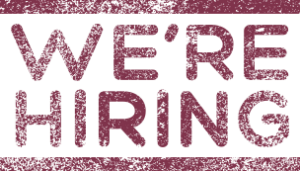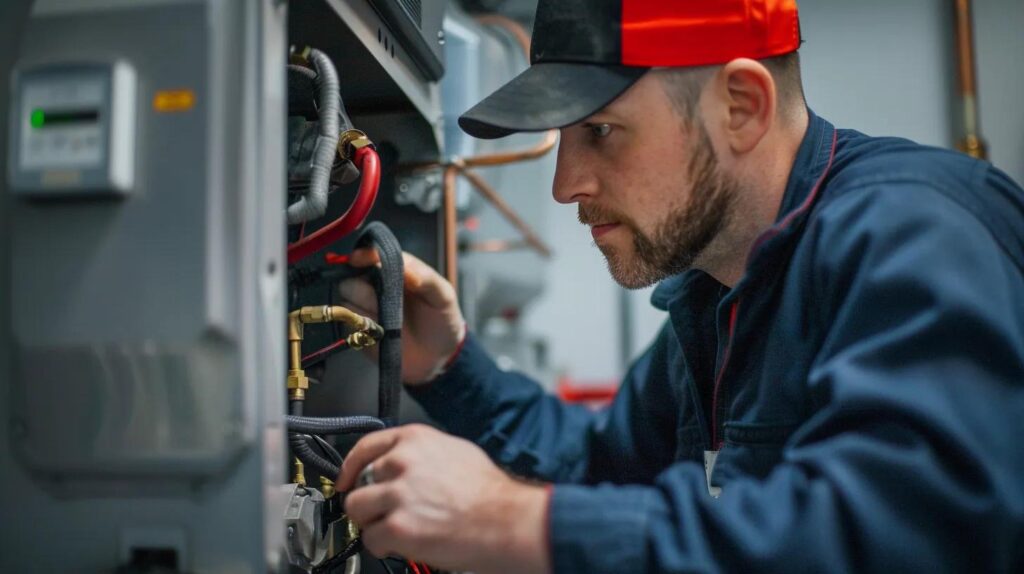
Get Your Furnace Ready for Winter: A Clear, Practical Checklist for Heber Springs Homeowners
Getting your furnace ready for winter is more than flipping a switch — it’s a short program of checks, cleaning, and safety tests that keeps your home warm, cuts energy waste, and helps avoid emergency calls. This guide walks through the fall maintenance tasks you can do yourself, when to call a pro, common winter problems and safe troubleshooting, plus essential safety steps like carbon monoxide awareness. With Heber Springs’ temperature swings and lake-area humidity, a timely pre-winter check protects comfort and indoor air quality. Read on for a clear step-by-step checklist, DIY filter and thermostat tips, guidance on scheduling a professional tune-up, and simple rules for when to escalate to a technician. We also cover safety protocols, common symptom flows (no heat, strange noises, odd smells), and how local pros can support you with inspections, maintenance plans, and financing options.
Why Prepare Your Furnace for Winter? Safety, Comfort, and Savings
Preparing your furnace means making sure combustion, airflow, and controls all work together safely and efficiently. The right prep reduces carbon monoxide risk, improves heat performance, and lowers energy bills. It also addresses wear-and-tear issues like clogged filters, miscalibrated thermostats, and venting problems that can cause uneven heating or unsafe operation. Doing this work before the cold settles in extends equipment life and cuts the odds of emergency repairs during Heber Springs’ busiest cold spells. Below we explain the main benefits of an annual check and how routine care helps indoor air quality.
Annual maintenance delivers clear safety and performance gains that help avoid midseason failures and wasted fuel. A routine inspection catches small faults — worn belts, dirty burners, a weak ignition — before they become big, costly problems. Keeping combustion and airflow tuned up preserves the heat exchanger and reduces carbon monoxide risk while improving efficiency, which lowers utility bills over sustained cold periods. That’s why combining basic DIY care with a professional tune-up before winter makes sense.
Furnace care also improves indoor air quality by focusing on filtration, sealed combustion, and cleaner ducts — all of which cut down on dust and allergens circulating through your home. Replacing or cleaning filters, checking for duct leaks, and making sure vents and flues are clear will reduce dust, pollen, and combustion byproducts inside living spaces. These steps matter even more for homes near Greers Ferry Lake, where humidity can stir up allergens. Next, you’ll find a practical checklist showing which pre-winter tasks you can do yourself and which are best left to a technician.
Benefits of pre-winter furnace care include:
- Safety first: Helps prevent carbon monoxide and fire risks by ensuring proper combustion and venting.
- Better efficiency: Clean parts and tuned controls use less fuel and cost you less to heat your home.
- More reliability: Catching wear early cuts the chance of emergency repairs in cold weather.
Combining DIY checks with professional inspections gives Heber Springs homeowners the best protection and performance from their heating systems.
Essential Steps to Prepare Your Furnace for Winter
Prepping your furnace is a mix of simple homeowner tasks and a handful of professional checks. Start with safe, straightforward jobs — filter checks, thermostat tests, and clearing vents — and book a pro for combustion testing, blower cleaning, and heat-exchanger inspection. The numbered list below gives a practical order to follow. After that, a quick table shows which jobs are usually DIY and which typically need a technician.
Begin with these easy, reliable steps any homeowner can do:
- Check the furnace filter — replace or clean it if it’s dirty to restore airflow.
- Inspect supply and return vents, remove obstructions, and vacuum register grilles.
- Test the thermostat: replace batteries if needed and confirm your programming for comfort and efficiency.
Once you’ve completed the DIY items, run the system through a full cycle and listen for unusual noises or delayed ignition. A smooth trial run is a good sign the system is ready. If you notice sputtering ignition, persistent smells, or constant cycling, those are clear reasons to schedule professional service. Below is a quick comparison of common pre-winter tasks and who usually handles them.
Use this to prioritize and plan your service visit before the weather turns.
| Maintenance Task | Who Typically Performs It | Frequency / When to Do It |
|---|---|---|
| Filter replacement | DIY | Every 1–3 months; check more often in winter or high-dust periods |
| Blower and motor cleaning | Professional | Annually — during fall tune-up or if airflow drops |
| Heat exchanger inspection | Professional | Annually — check for cracks or corrosion |
| Vent and flue visual check | DIY / Professional | Visual check monthly; call a pro if you see corrosion or blockage |
| Thermostat programming / calibration | DIY / Professional | Program in fall; have a pro calibrate if temperatures don’t match settings |
This table shows which tasks you can handle and which are safer or more effective when done with a technician’s tools and testing. The next sections cover filter and thermostat work in a bit more detail so your DIY checks are done right.
Cleaning and Replacing Furnace Filters — A Simple Winter Win
Start by identifying the correct filter size and MERV rating for your system — that balance determines how well the filter traps particles without restricting airflow. Turn the system off, slide the filter from its slot, and inspect it. Disposable pleated filters get replaced; washable filters should be cleaned, fully dried, and reinstalled. Because the furnace runs more in winter, check filters more often — many homes move to monthly checks or every 6–8 weeks in dusty conditions. Keeping filters clean restores proper airflow, reduces blower strain, and helps maintain indoor air quality during the heating season.
Filter care is one of the highest-impact DIY jobs: a clean filter lowers energy use and helps prevent stress on the heat exchanger that can lead to expensive repairs. If you switch to a higher-efficiency filter, confirm your blower can handle the extra resistance — if in doubt, ask a technician during your fall tune-up. Regular filter attention also cuts down on dust and allergens in the house, making it a simple, effective pre-winter task.
Checking and Testing Your Thermostat Before Winter
Test your thermostat by setting it a few degrees above room temperature and confirming the furnace starts and reaches the setpoint. Replace batteries yearly and double-check that your programmable schedule matches your routine to avoid heating an empty house. For smart thermostats, make sure Wi‑Fi and remote controls work so you can adjust settings when you’re away or during sudden cold snaps. If the thermostat consistently reads off or won’t respond, call a technician for calibration or replacement.
Getting the thermostat right saves energy over the season by avoiding overheating and short cycling. If your unit lacks scheduling, consider upgrading to a programmable or smart thermostat — professional installation ensures wiring and compatibility are correct. With the thermostat tested, the next section explains when to schedule a pro for a full tune-up in Heber Springs.
When to Schedule a Professional Furnace Tune-Up in Heber Springs
Schedule a pro for an annual tune-up — ideally in late summer or early fall — so your system is inspected, cleaned, and optimized before the cold sets in. Early scheduling avoids delays when service demand rises and gives technicians time to do combustion testing, heat exchanger checks, and airflow adjustments under mild conditions. You should also call for a tune-up right away if you notice warning signs like strange smells, uneven heating, frequent cycling, or rising fuel use. Below are common triggers to book service sooner rather than later.
Watch for these signs that it’s time for professional service:
- Persistent or odd smells: Could be dust burning or an electrical issue that needs diagnosis.
- Rooms heating unevenly: Might point to airflow problems, duct leaks, or failing parts.
- Frequent short cycles: Often indicates thermostat or blower issues that need adjustment.
Getting a professional inspection before heavy use lowers the chance of midwinter failures and lets technicians perform safety checks like carbon monoxide testing and combustion analysis. The table below outlines common service types and what each typically includes so you’ll know what to expect during a visit.
Use this comparison to choose the right service level and to prepare questions for the technician.
| Service Type | Includes | Key Checks Performed |
|---|---|---|
| Tune-up | Visual inspection, cleaning, and basic adjustments | Filter check, burner cleaning, airflow and thermostat checks, lubrication |
| Inspection | Detailed system review and safety testing | Heat exchanger inspection, combustion/CO testing, flue and vent evaluation |
| Repair | Targeted fixes for malfunctioning components | Component replacement, ignition repairs, duct sealing as needed |
That comparison explains how tune-ups differ from full inspections and repairs — combining an annual tune-up with periodic inspections offers the best balance of safety and efficiency. The next section covers common winter furnace problems and safe troubleshooting steps.
What’s Included in a Professional Furnace Tune-Up?
A professional tune-up is a systematic check to restore efficiency and confirm safety. Technicians typically clean burners, inspect the heat exchanger, check ignition and controls, and verify airflow. They’ll use proper tools to test combustion and, if necessary, measure carbon monoxide levels to protect household health. Routine maintenance often includes lubricating moving parts, tightening electrical connections, and advising on the right filter type and replacement schedule. Knowing these steps helps homeowners understand the value of a pro visit and what to expect.
These checks improve immediate performance and build a service history that guides future repairs or replacements. Pros can spot early problems that quick DIY checks miss — hairline cracks in a heat exchanger or subtle flue corrosion, for example. With the tune-up routine clear, the next section explains cost factors so you know why calling a local provider gives the most accurate estimate.
Common Winter Furnace Problems and How to Troubleshoot Them
Common winter issues include no heat or uneven heating, strange noises, odd smells, and frequent cycling. Many of these have simple DIY checks that are safe and can tell you whether you can fix the problem yourself or need a technician. A safe troubleshooting order starts with power and thermostat checks, moves to filters and vents, and only goes into fuel or ignition checks if you’re trained and it’s safe. This section gives step-by-step DIY checks and clear “stop-and-call” guidance for when to bring in a pro. The approach prioritizes safety while helping you restore comfort quickly when minor problems arise.
Start troubleshooting with basic, safe checks before touching electrical components or fuel lines:
- Confirm thermostat settings and power — set to heat, batteries fresh, and circuit breakers on.
- Inspect and replace clogged filters — restricted airflow is a common cause of poor heating.
- Ensure vents and registers are open and unobstructed — closed or blocked vents can make rooms cold.
If those steps don’t fix the issue, or if you smell gas, persistent combustion odors, or see signs of heat exchanger damage, stop DIY work and call a licensed technician for combustion testing, ignition diagnosis, and safe repair. The guidance above helps avoid unnecessary service calls while keeping safety front and center.
How to Diagnose No-Heat or Uneven Heating Problems
Start with the thermostat and power: confirm it’s set to heat and that circuit breakers and switches are on. Next, check and replace the filter and make sure supply vents are open — restricted airflow is a common reason rooms stay cold even when the furnace runs. If the burner or ignition won’t light, don’t attempt repairs on gas valves or burners; shut the system off and call a professional to avoid combustion or CO hazards. If the blower runs but heat is weak, a technician can inspect the heat exchanger, burner efficiency, and ductwork for leaks or blockages.
Call a technician immediately if you detect gas odors, visible rust or corrosion near flues, or a sudden, consistent loss of heat despite the furnace operating. Pros can safely test combustion, verify gas pressure, and inspect the heat exchanger for cracks that pose carbon monoxide risk. Following these steps helps resolve common problems while protecting occupants from hazardous conditions.
What Strange Noises or Odors Mean — and What to Do
Noises and odors usually point to specific mechanical or combustion issues and should be sorted quickly to judge urgency. Rattling often means loose panels or debris, banging can signal delayed ignition or expanding/contracting ducts, and high-pitched squeals usually come from a worn blower belt or motor bearing. A dusty burning smell is normal the first time the furnace runs after the offseason and usually fades; persistent or sulfur-like gas smells require immediate evacuation and professional response. Electrical burning or acrid odors are red flags — shut the system off and call a technician right away.
For mild, temporary noises, tighten access panels and keep an eye on performance. For persistent mechanical sounds or any suspicious smells, shut off the furnace and get a pro to diagnose the issue. Technicians can replace failing belts, isolate noisy bearings, test ignition timing safely, and confirm there are no combustion irregularities that threaten indoor air quality. Early attention keeps small problems from becoming dangerous or expensive.
Frequently Asked Questions
What are the signs that my furnace needs immediate professional attention?
Call a technician right away if you notice persistent strange odors, major uneven heating between rooms, or frequent short cycles. A steady burning or electrical smell can indicate an electrical fault; uneven warmth may point to airflow or duct problems; and constant short runs often mean the thermostat or blower needs adjustment. When in doubt, get a pro to diagnose the issue safely.
How often should I schedule a professional furnace inspection?
Schedule a professional inspection at least once a year, ideally in late summer or early fall. That timing lets technicians complete maintenance before heavy use. If your furnace is older or you notice unusual symptoms, consider inspections more often to keep performance and safety on track.
Can I perform my own furnace maintenance, and what should I focus on?
Yes — basic maintenance is something homeowners can and should do. Focus on checking and replacing or cleaning the filter regularly, keeping supply and return vents clear, and testing the thermostat. Also keep the area around the furnace free of clutter and flammables. For combustion testing, heat exchanger inspection, or any gas-line work, always call a trained professional.
What should I do if my furnace is making strange noises?
Identify the sound: rattling often means loose panels or debris, banging can be delayed ignition or duct movement, and high-pitched squeals usually indicate a failing belt or bearing. For transient noises, tighten panels and monitor. For persistent or worsening sounds — or if you smell something odd — shut the furnace off and contact a technician for a full inspection.
Conclusion
Preparing your furnace for winter is one of the best ways to keep your home safe, comfortable, and energy-efficient. A few simple DIY checks paired with an annual professional inspection will cut the chance of breakdowns and help maintain indoor air quality. Don’t wait until it’s cold — schedule your pre-winter inspection now for peace of mind all season long.
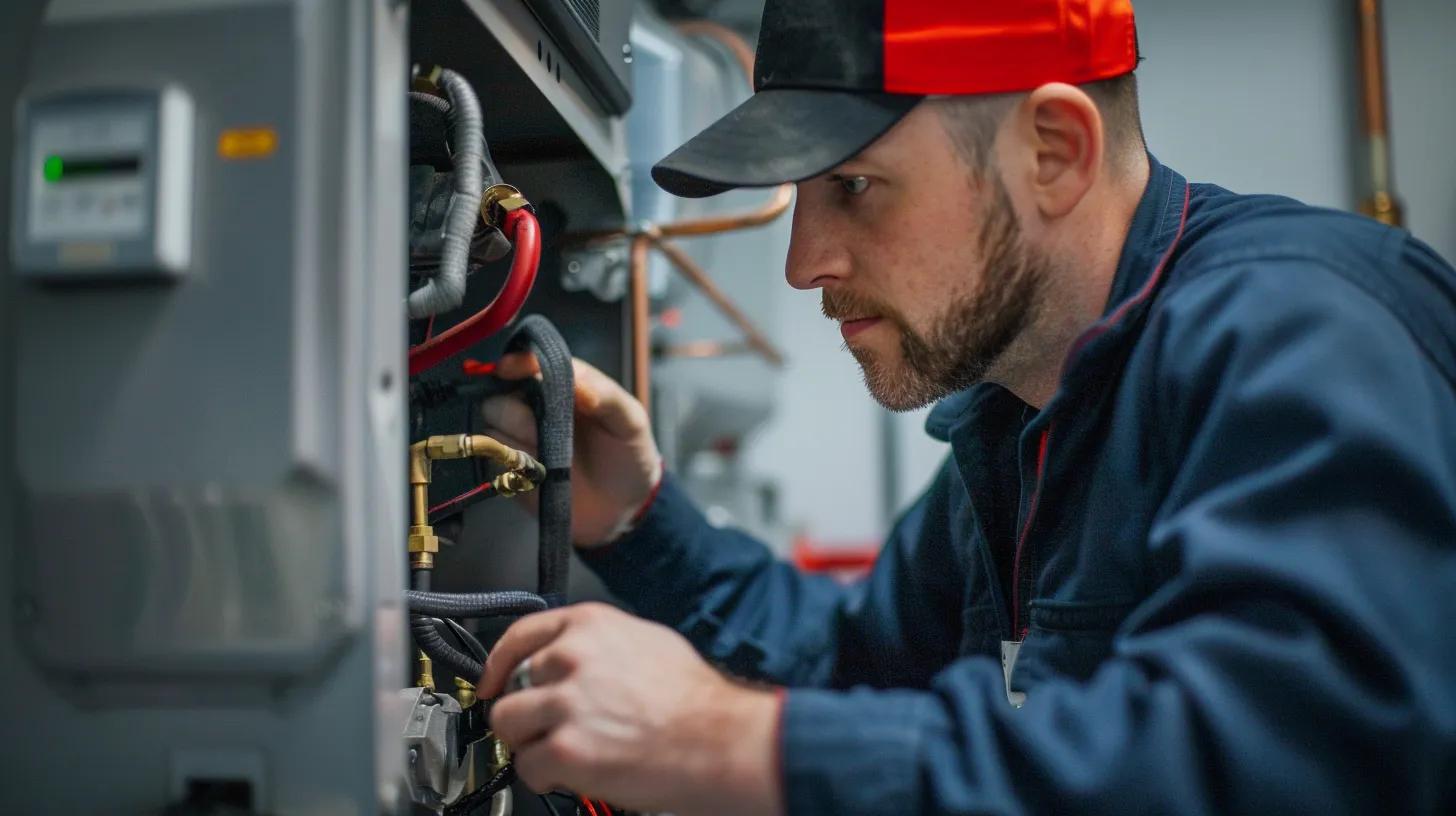

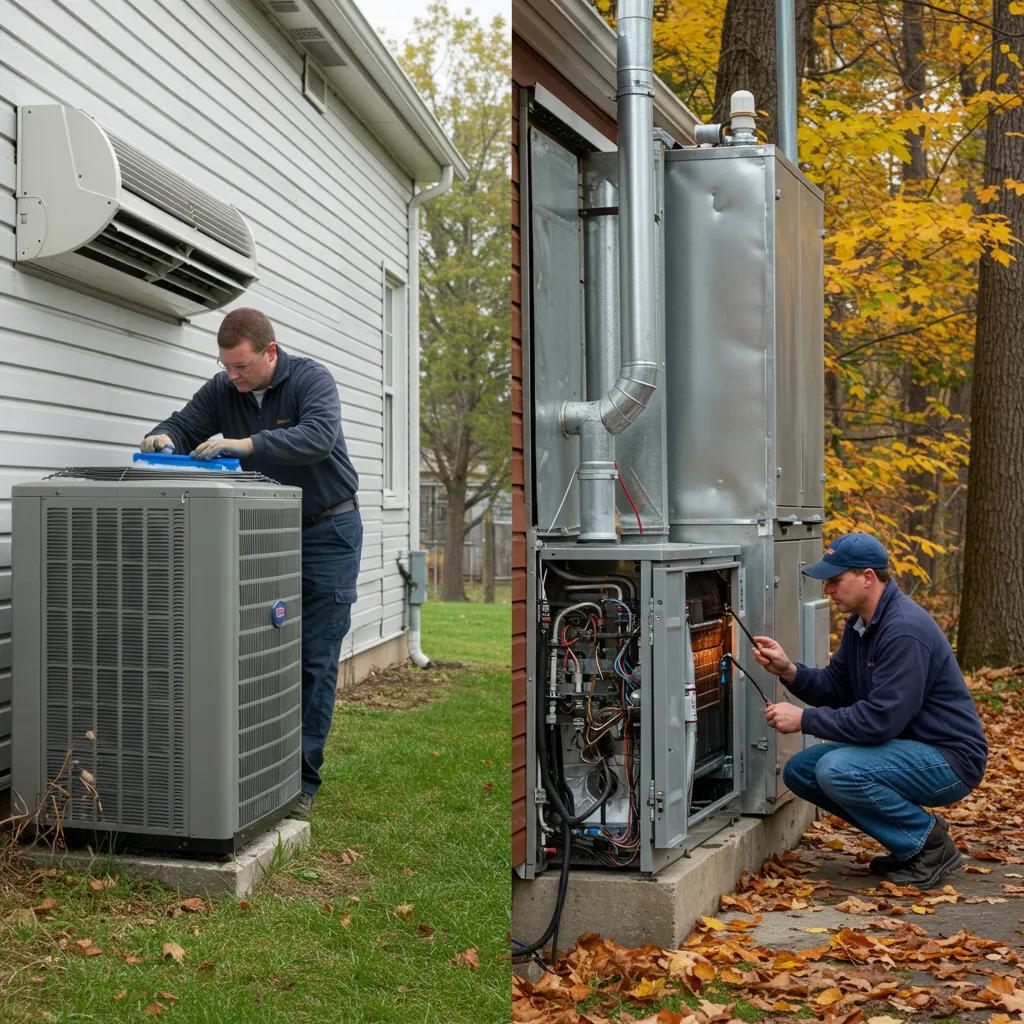

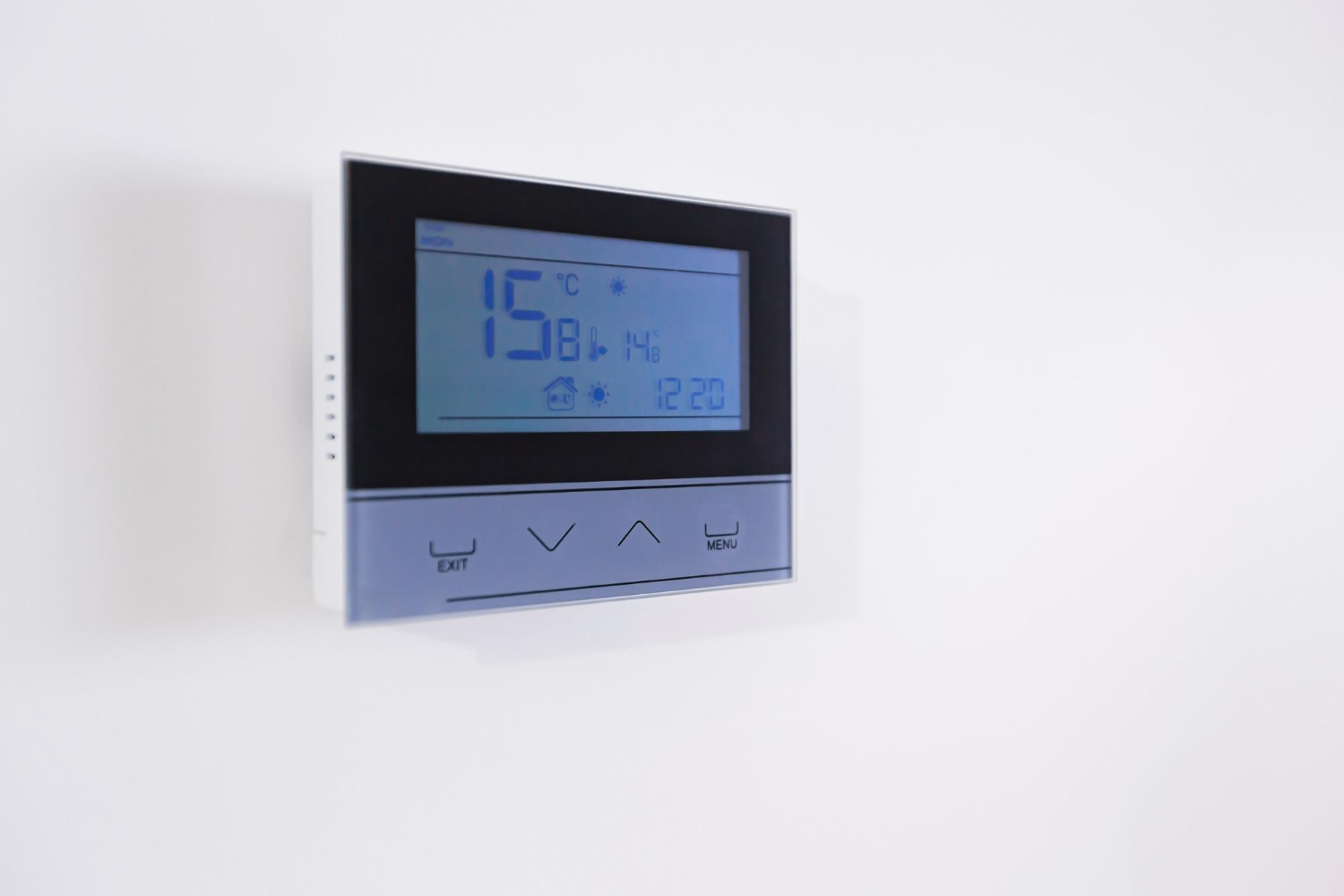
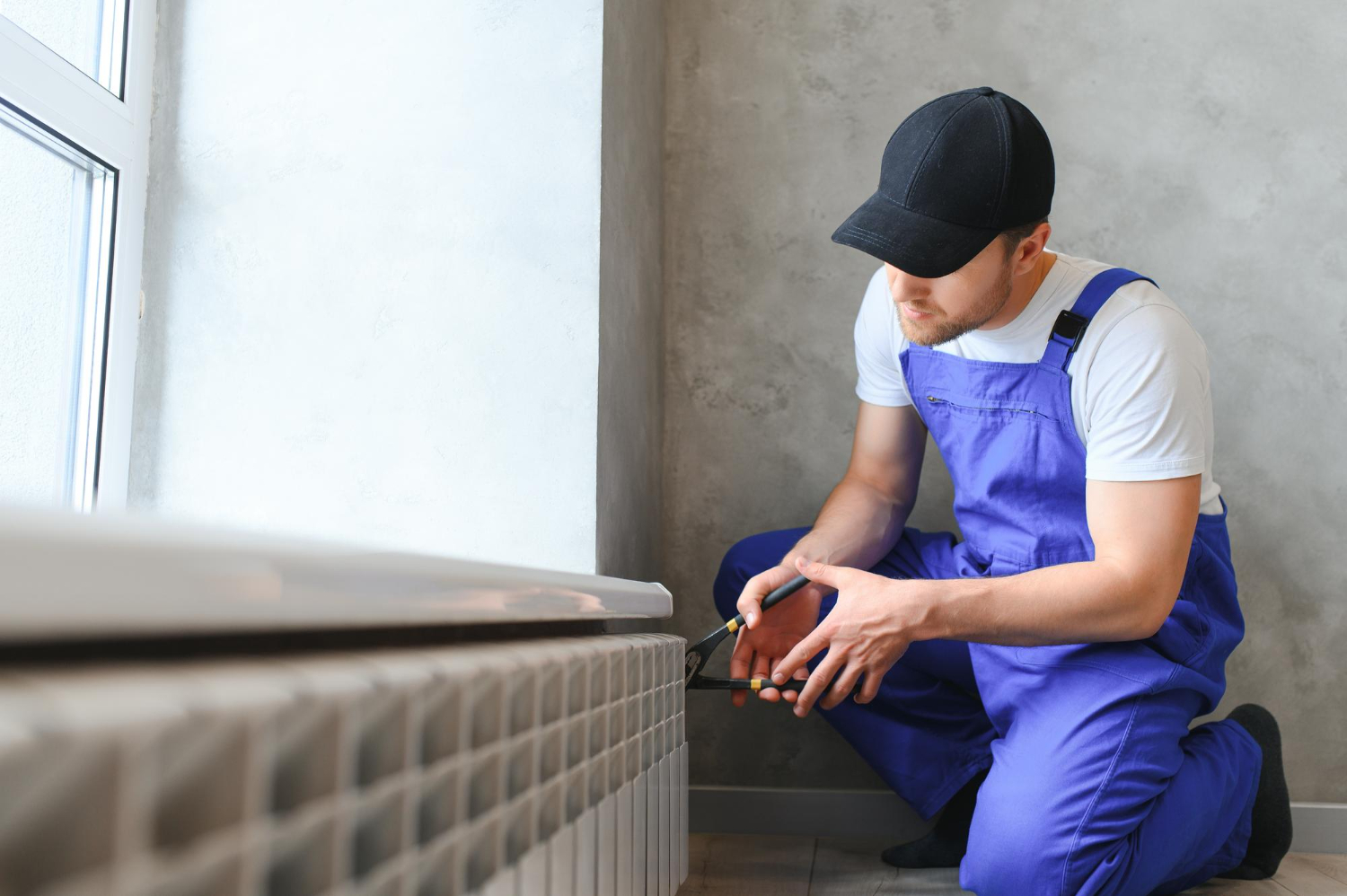
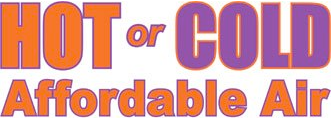

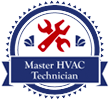
 100% Guarantee. If you aren't happy, we will keep coming back until you are.
100% Guarantee. If you aren't happy, we will keep coming back until you are.


